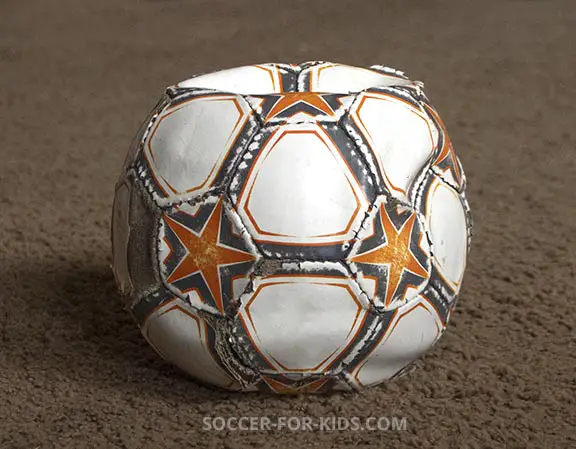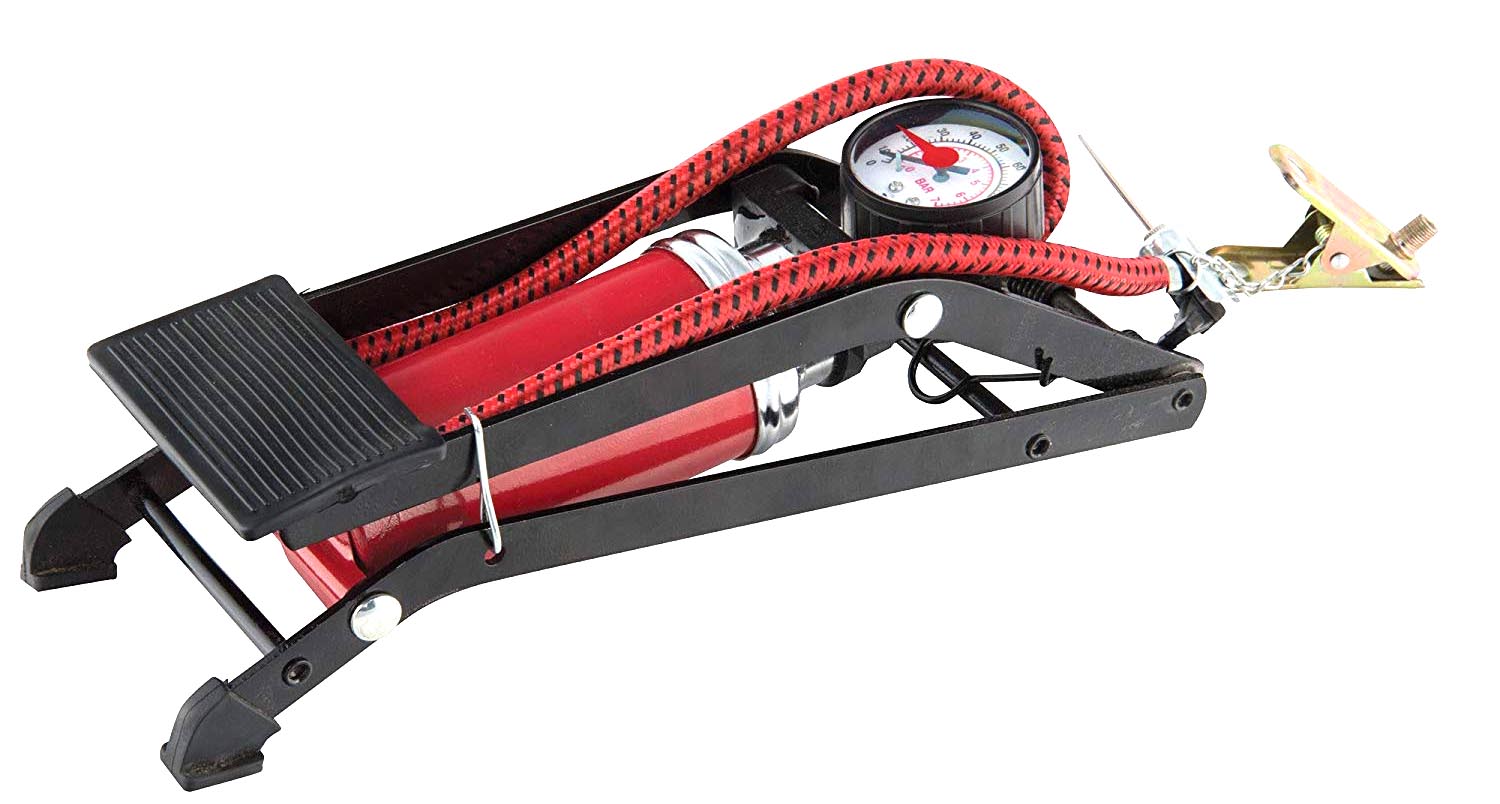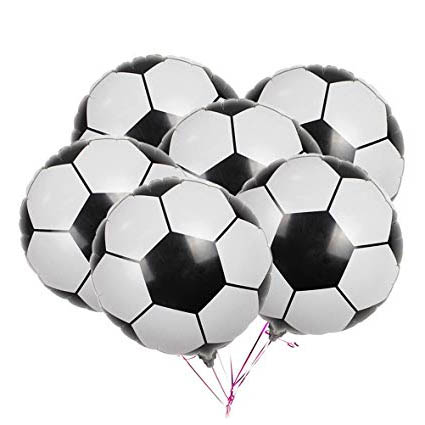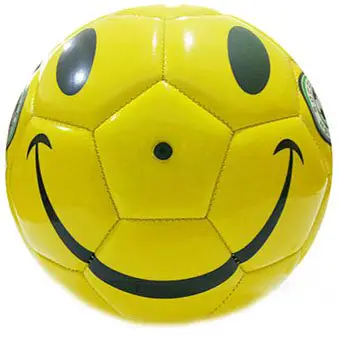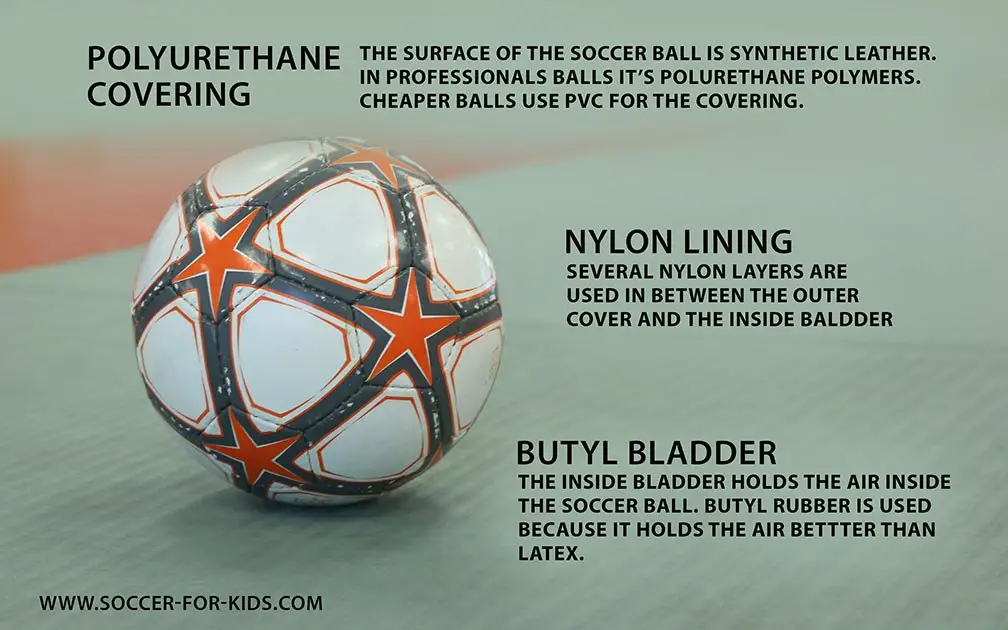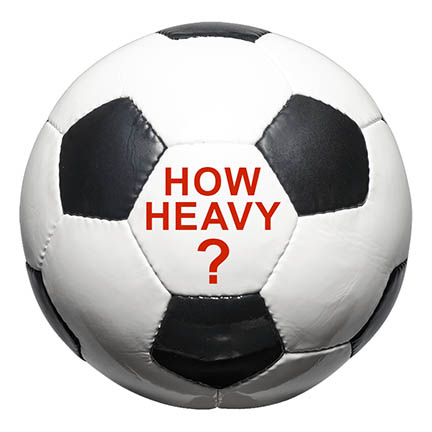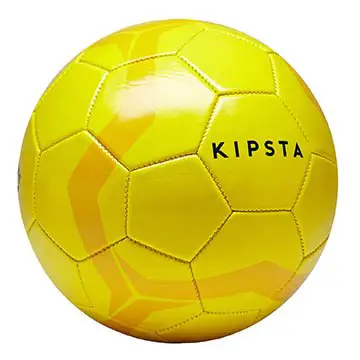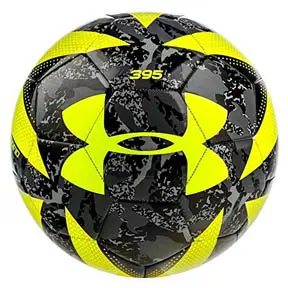How to get soccer ball pressure just right
correct pressure for size 5,4, and 3 Soccer Ball
WRITTEN BY: COACH BRUCE LOVELACE
UPDATED ON: JANUARY 6, 2024
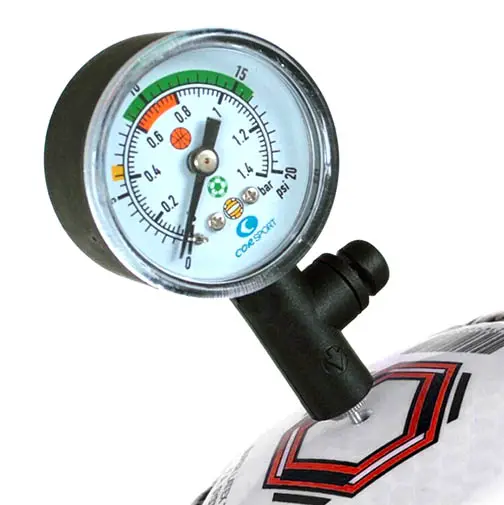 Soccer Ball Air Pressure Gauge
Soccer Ball Air Pressure GaugeThere are several reasons why it is important to have your soccer ball inflated to the correct pressure. and be difficult to control. A ball that is too soft will not travel as far and will be more difficult to pass and shoot. The correct pressure will help to ensure that the ball bounces predictably and that it can be easily controlled by players.
It's a question you were just wondering about. What's the regulation soccer ball pressure in psi, pounds per square inch for the various sized balls? FIFA says the air pressure in a regulation soccer ball must be between 8.5 psi and 15.6 psi. You don't want your soccer ball to be inflated to the wrong pressure for several reasons.
Here's why it's important to have your soccer ball properly inflated to the right air pressure.
If a soccer ball is overinflated, it is more difficult to kick and impact with a player's head or body is more severe. A ball that is too hard will bounce too high. If a soccer ball is underinflated it will not travel in a straight direction and it won't go as far. A ball that is too soft will not travel as far and will be more difficult to pass and shoot.
Soccer balls last longer if they are properly inflated. This post will help you understand all you need to know about inflating youth soccer balls to the correct pressure.
pressure requirements for each ball size
Admittedly, that's a wide range of acceptable pressures for a soccer ball to be inflated to, but that's the official rule of FIFA, the Fédération Internationale de Football Association. The huge publicity/controversy nicknamed "Deflategate" that surrounded Tom Brady and the New England Patriots American football team makes you wonder if a deflategate could happen in soccer too. Could a purposefully under inflated ball be used for one team to gain an advantage?
Quick answer: no.
Both teams play with the same ball, so any under-inflated or over-inflated ball would be noticed immediately by the players or one of the officials who examines the ball before the match starts. An improperly inflated soccer ball would be replaced with a properly inflated ball before any play would continue. What else do you need to know about soccer ball pressure?
What else should you know about inflating soccer balls?
You've got the simple answer to what's the best air pressure for soccer balls, but there are also some other important things to know about the soccer balls you want to use for your kids. These include the 3 ways on how to measure the pressure of a soccer ball, the best way on how to inflate a soccer ball properly, how to deflate a soccer ball, how pressure affects the behavior of the soccer ball, and what soccer balls are inflated with.
A good referee should check the soccer ball before each game to make sure it is suitable for playing a game. Weather and field conditions and the age of the soccer players may affect the referees judgement on the exact pressure she feels is best for all concerned.
How does a referee or the home team coach make sure the soccer ball is properly inflated? There are 3 ways to measure soccer ball pressure.
HOW TO CHECK SOCCER BALL PRESSURE
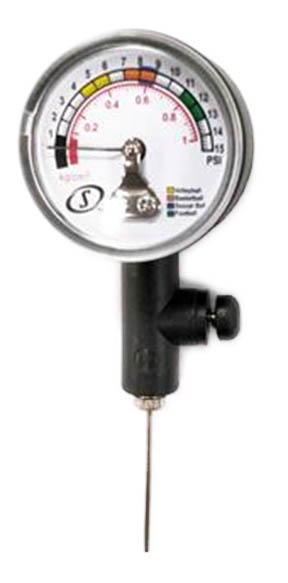 Air pressure gauge
Air pressure gauge- BEST METHOD. The best way to measure the soccer ball pressure is to use a air pressure gauge. It is recommended that you use one of these gauge to measure the exact amount of pressure in a ball after inflating and before use. The large majority of air pressure gauges are analog, but there are newer digital gauges too. Many gauges include markings on their dials to show you the right pressure for soccer, volleyball, and basketballs. Some soccer gall pressure gauges will even include markings for the softer inflated FUTSAL soccer balls.
how to measure pressure if you don't have a soccer pressure gauge
- WORST METHOD. The bounce test. This is the least reliable and I don't recommend it, even though you'll find this soccer ball pressure-checking method posted on other soccer websites. Example 1: Drop your soccer ball from 80 inches and it should bounce back up to between 45 and 65 inches. Example 2: A soccer ball should bounce up about 2/3 of the original height it was dropped from.
- MOST COMMON METHOD. The squeeze test. This is technically not the "best" method of determining the correct soccer ball pressure, but many would argue that it's the most practical. This is what I witnessed as a coach every single time I observed referee check a ball before one of our soccer matches. Would this be acceptable for a World Cup soccer match? Perhaps not, but after a bit of experience with pumping up balls, you'll develop a sense what feels right, depending on game conditions and the type of soccer ball you have.
how to properly inflate a soccer ball to the right pressure
By far the easiest way to initially pump up your soccer ball is to use a pump that has a built-in pressure gauge. I bought one of these when my oldest first started playing recreational soccer in our home town and it lasted many years before finally breaking down, maybe 15 years later.
The biggest mistake coaches and parents make when inflating a soccer ball revolves around the needle. It should be lubricated first and then inserted at a direct angle toward the center of the ball. Failure to do this right might result in a damage to the soccer ball valve or internal bladder.
Here's a quick video with a few tips on inflating your soccer ball to the right pressure.
Converting BAR pressure to PSI soccer ball pressure
As a side bar (pun intended) you should know that soccer ball pressure can be stated with a BAR or a psi number. Interestingly enough, BARs (and millibars) are used by meteorologists when they talk about air pressure and 1 BAR is about the same as normal atmospheric air pressure. Normal atmospheric pressure is 14.7psi.
For example: A soccer ball has a recommended pressure of 0.6 BAR labeled on it. To convert to psi pressure, multiply the BAR pressure by 14.5. The answer is 8.7 psi, which is at the bottom end of the range of correct pressures for a soccer ball.
how to DEFLATE a soccer ball
A bag of inflated soccer balls can take up a lot of space. You may need that valuable room in your garage for something else and want to reduce clutter during the off season. No, don't stab your ball with a knife. There is a proper way to deflate your soccer ball by letting out the air. Here is the 4-step method of deflating your soccer ball:
- Mosten the needle (with a lubricant other than your saliva)
- Carefully insert it into the ball, perpendicular to the ball's outer surface.
- Gently squeeze out all of the air until its shape resembles an empty bowl.
- Find a secure place to store your needle where it is protected and you won't lose it. There's nothing worse than having a flat soccer ball, a good working pump, but no needle to get the air into your ball.
You can deflate a soccer ball using other objects , but I cannot with good conscious recommend this method. It's so easy to damage the valve and then your ball is next to worthless. People have successfully deleted a soccer ball without a needle by using a paperclip and lubrication, but you're flirting with disaster.
are soccer balls filled with helium?
What are professional soccer balls filled with? There is an old myth that soccer balls are filled with helium. I had never heard that one until doing research to write this post.
Supposedly some people still believe this, but regular old breathable air is used. It's a mixture of nitrogen, oxygen, and a few other trace elements. If helium were used to inflate soccer balls the process would be more complicated and add an unnecessary expense to playing soccer.
soccer ball air pressure and distance
You might be wondering how the pressure of a soccer ball affects the kicking distance as well as the control of the ball. The higher that the pressure is inside the ball the farther it will travel when kicked.
Here's the geeky explanation. When a ball is stiffer more of the energy from a child kicking it is moved into the ball. Softer balls, when kicked, lose more energy in the deformation of the ball's surface. How air pressure affects a kicked soccer ball travel would make a great science project for your young soccer players in your family.
The best way to do this would be inflate your soccer ball to 1)very firm, 2)slightly soft, and 3)very soft pressure levels. In addition to ball pressure, realize there's one more important factor that determine how far it will go, the weight of the ball.
I hope this article on youth soccer balls and pressure was helpful. To search for other soccer articles on this website use the search box below. For more information about soccer balls use one of the links below my signature.
Keep it fun!

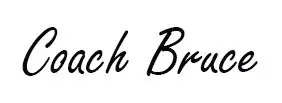
Soccer coach Bruce Lovelace started playing soccer in 1974 when, as a young boy, he constructed his own makeshift soccer goal. He played in high school, then in college and beyond. He started to coach his own children in the 1990s and then ran a Soccer Shots franchise for 12 years. Now, Coach Bruce publishes the soccer-for-kids.com website. Find out more about youth soccer coach Bruce Lovelace and what inspires this website.
Soccer-for-kids.com is a participant in the Amazon Services LLC Associates Program, an affiliate advertising program designed to provide a means for sites to earn advertising fees by advertising and linking to Amazon.com
